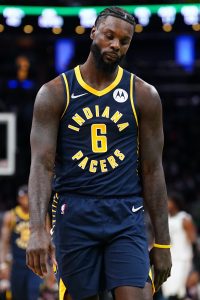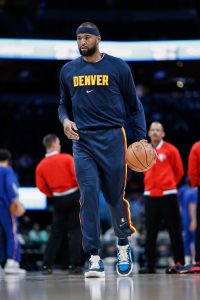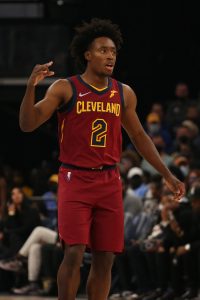The Lakers made no progress on Thursday night toward turning their season around, suffering a blowout loss to the rival Clippers. It extended their losing streak to four games, dropped their record to 27-35, and left guard Russell Westbrook looking for answers once again.
 “My role and what I’m doing has changed every single night,” Westbrook said after the game, according to ESPN’s Dave McMenamin. “So I’m just trying to figure that out as I’m playing and to be able to benefit and help my team.
“My role and what I’m doing has changed every single night,” Westbrook said after the game, according to ESPN’s Dave McMenamin. “So I’m just trying to figure that out as I’m playing and to be able to benefit and help my team.
“But my expectations are still the same. I’m not a quitter. It’s not in my genes. I don’t quit, regardless of what the hell is going on. I’m going to fight to the end, and if it don’t work, that’s cool, too. I can live with the results. But I’m never going to give up or give in because of a little struggle that’s happening this time of the year.
While Westbrook’s struggles are hardly the only reason the Lakers have had such a disappointing season, he hasn’t fit in like the team had hoped and has faced criticism for months. Asked on Thursday if the Lakers have discussed the possibility of bringing Westbrook off the bench to change things up, head coach Frank Vogel replied, “We’ve talked about everything.”
Within his report on the Lakers’ situation earlier this week, Jake Fischer of Bleacher Report wrote that Vogel’s staff has never “seriously broached” the idea of having Westbrook come off the bench to the former MVP, adding that Westbrook likely wouldn’t entertain the idea. But these are desperate times for the Lakers, and Vogel’s comments on Thursday indicate it hasn’t been ruled out.
With just 20 games left in the Lakers’ season, time is running out to right the ship. With that in mind, we want to know whether you still have any faith left in this L.A. team.
At 27-35, the Lakers hold the No. 9 seed in the West, a full nine games back of the No. 6 Nuggets. They’re one game up on the No. 10 Pelicans and two games ahead of the No. 11 Trail Blazers. The Spurs (3.5 games back) and Kings (4.5 games back) are also lurking, but aren’t serious threats to the Lakers at this point.
Given the lack of serious competition outside of the West’s top 10 seeds, it still looks like a reasonably safe bet that the Lakers will qualify for the play-in tournament. But earning a playoff spot outright by finishing as a top-six team will be virtually impossible, and even finishing in the top eight looks increasingly unlikely, since they’re 5.5 games back of the No. 8 Clippers. If they finish ninth or 10th in the West, they’d have to win two play-in games to even make it to the playoffs.
As a reminder, the winner of the play-in game between the seventh and eight teams earns the No. 7 seed, while the loser of that game plays the winner of the matchup between the ninth and tenth teams for the No. 8 seed. That means the Lakers might have to beat, say, the Pelicans and then the Clippers (or Timberwolves) to even claim the No. 8 seed. At that point, they’d be in line for a matchup against a top-seeded Suns team that eliminated them from the playoffs last year.
Based on how the Lakers have looked lately, I’m growing more and more skeptical that we’ll even see them in the playoffs, whether or not they have Anthony Davis back for the play-in tournament. But we want to know what you think.
How do you see the Lakers’ season ending? Do they still have a chance to make a playoff run? Should they already be looking toward 2022/23?
Vote in our poll, then head to the comment section below to share your thoughts!


 A top-14 pick who does not meet the starter criteria will receive a qualifying offer equal to the amount the 15th overall pick would receive if he signed for 120% of the rookie scale.
A top-14 pick who does not meet the starter criteria will receive a qualifying offer equal to the amount the 15th overall pick would receive if he signed for 120% of the rookie scale.